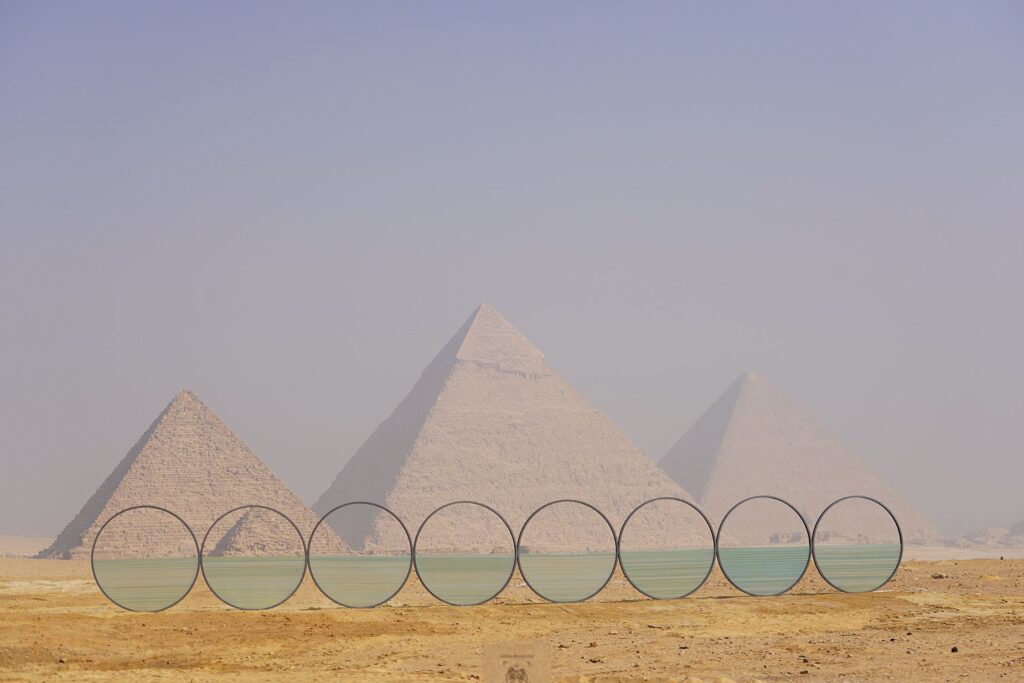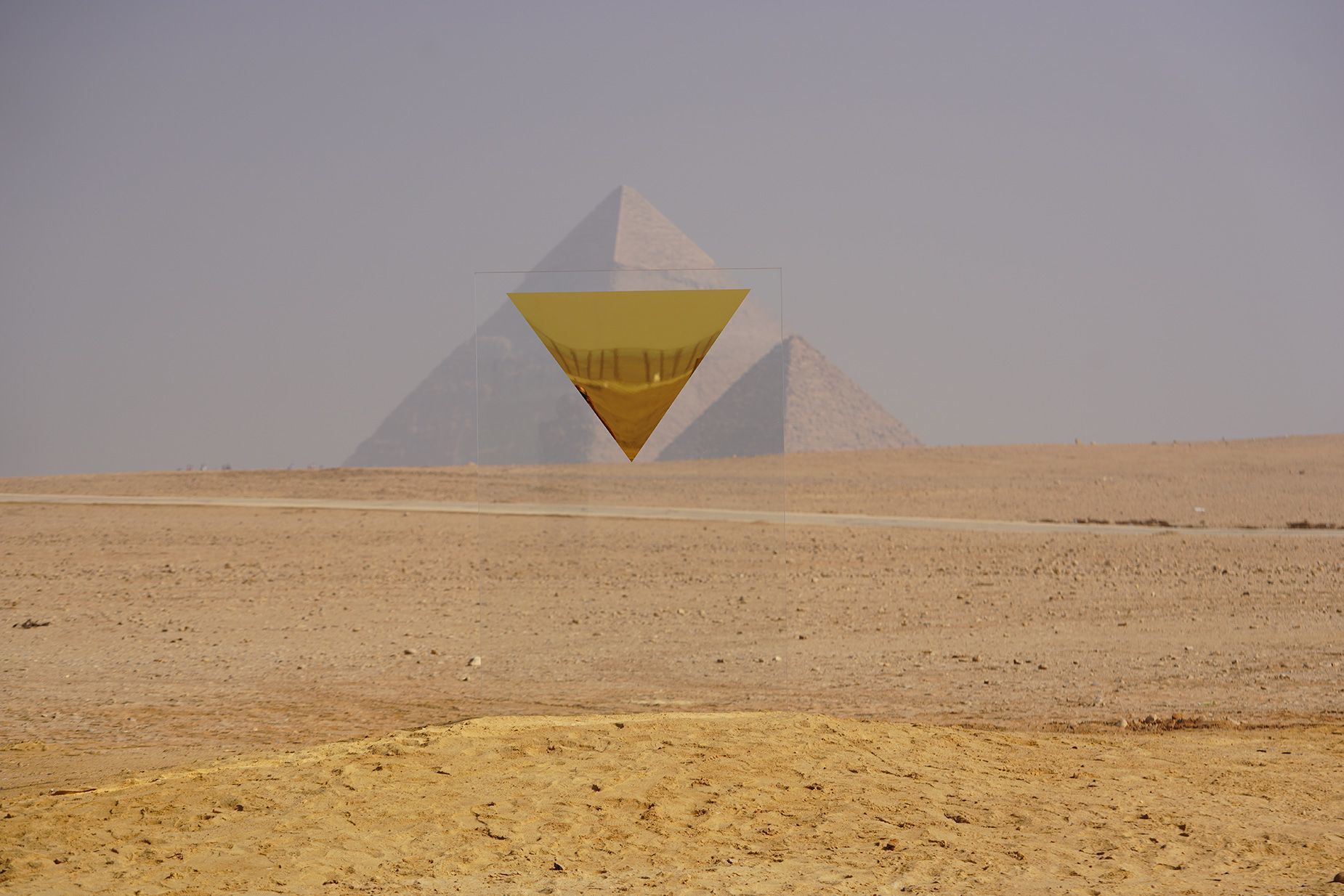On the plateau overlooking the ancient Pyramids of Giza in Egypt, a major outdoor art exhibition brings together the work of 14 international contemporary artists who have created site-specific installations responding to the iconic monuments. In one project, a new pyramid structure emerges in wicker; in another, glass sculptures appear to make the ancient pyramids float on water.
“Forever Is Now III” (on until 18 November) is the third edition of an annual exhibition held at the site, and the biggest yet. Organized by Nadine Abdel Ghaffar, the founder and curator of Cairo-based arts firm Art D’Egypte, the event aims to celebrate ancient Egyptian culture through contemporary creativity.

“Every year we have an amazing group of artists that are in dialogue with this civilization,” said Ghaffar over video call from Cairo. Art D’Égypte works with UNESCO to ensure the exhibition leaves the 4500-year-old world heritage site completely unharmed. (A 50cm layer of imported sand is used to place the artworks on, so they don’t even touch the ground.) The works this year engage with the fertile territory of concepts presented by the pyramids, from mythology and spirituality to technical innovation and architecture.









